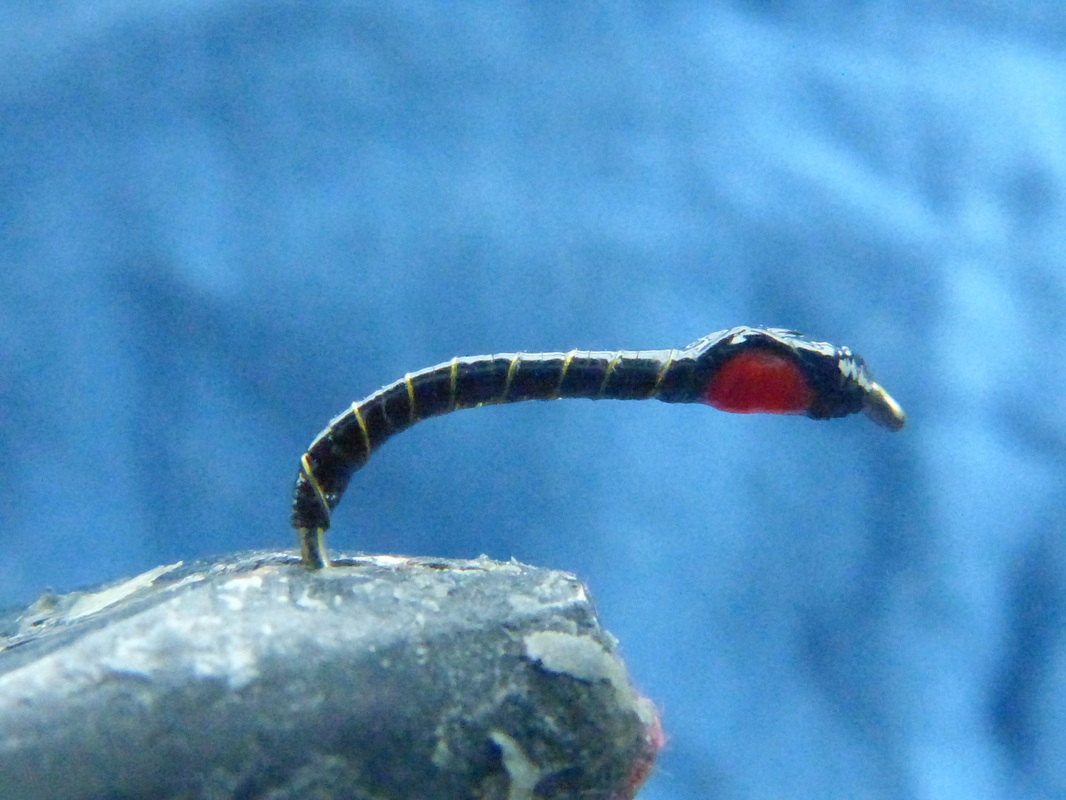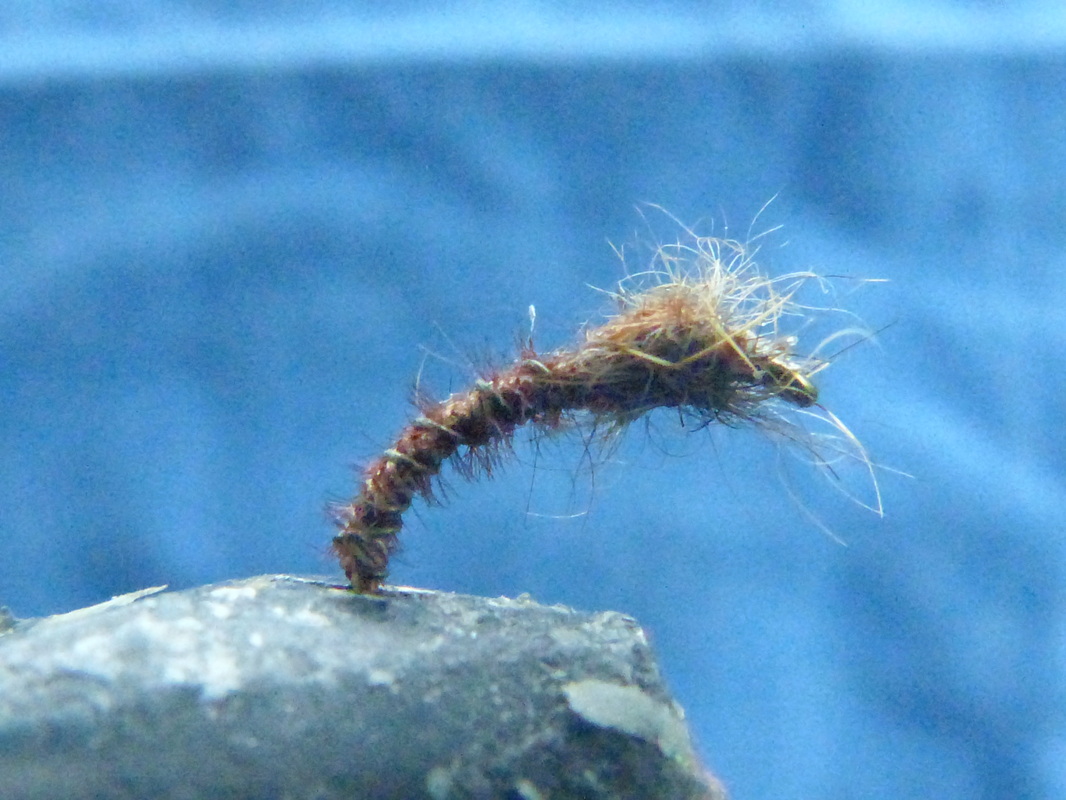Emerging Buzzer Pupae.
When conditions are right i.e. calm enough to break through the surface water film and the correct temperature range the bloodworms turn into to pupae that swim to the surface to hatch.
This is when the lochs really come alive for the fly fisherman and offer some of the best sport for the fly fisherman for a variety of reasons. The angler is desperate to fish after a long dark winter and the fish are woken from there winter slumber and eating as much as possible because they know this bonanza will not last for ever. Many of The fish have moved off the stony shore line to capitalise on the increasingly regular hatches of insects including buzzers. Various species of midge probably hatch almost 365 days a year in varying amounts , but the heavy buzzer hatches that the fly fishers love start happening around April reaching a peak in may though to June then starting to slow down there on after though hatches will continue through to the end of the season .
The colours of midge pupae in Shetland lochs range from black, grey, olives, greens, ambers and browns in sizes equivalent to size 8-22 hooks.
It is impossible to have every possible permutation of buzzer pupae in your box and there are many buzzer pupae patterns the angler can choose from both old and especially new and a selection of appropriate sized and coloured patterns is desirable for consistent success.
There are a multitude of traditional patterns that can work on their day such as Pennells, Butchers, Bibios as well as more modern flies such as crunchers, snatchers and cormorants. At the very early stages of the hatch there may be no visible signs of fish activity because the buzzer pupae are still deep, this is when the fast sinking varnished bodied buzzer patterns the emanated from the English reservoir scene can score heavily .
Another important consideration when choosing buzzer pupae patterns alongside size and colour is sinking rate of the fly because to be consistently successful the fly needs to be fished near static at the depth the fish are taking the pupae at which could be anywhere from the bottom to the top.
Presuming you are in the right place at the right time the first thing to do is to ascertain what stage of the hatch you are confronted with. Sometimes by the time the anglers has worked out what the fish want the hatch is over or a or a different stage of the hatch commences and you have to react accordingly.
Fishing for trout in a rise of buzzers can sometimes be extremely easy when the fish just throw themselves at your fly but commonly it can be a cause of great frustration because the fish can be extremely pernickety, It is not just a matter of getting the right sized and coloured fly in the right place, but a matter of presenting the fly to the fish how they want it at that particular time which can be linked to the behaviour of the pupae. Sometimes the fish like the fly static sometimes they respond to movement.
When conditions are right i.e. calm enough to break through the surface water film and the correct temperature range the bloodworms turn into to pupae that swim to the surface to hatch.
This is when the lochs really come alive for the fly fisherman and offer some of the best sport for the fly fisherman for a variety of reasons. The angler is desperate to fish after a long dark winter and the fish are woken from there winter slumber and eating as much as possible because they know this bonanza will not last for ever. Many of The fish have moved off the stony shore line to capitalise on the increasingly regular hatches of insects including buzzers. Various species of midge probably hatch almost 365 days a year in varying amounts , but the heavy buzzer hatches that the fly fishers love start happening around April reaching a peak in may though to June then starting to slow down there on after though hatches will continue through to the end of the season .
The colours of midge pupae in Shetland lochs range from black, grey, olives, greens, ambers and browns in sizes equivalent to size 8-22 hooks.
It is impossible to have every possible permutation of buzzer pupae in your box and there are many buzzer pupae patterns the angler can choose from both old and especially new and a selection of appropriate sized and coloured patterns is desirable for consistent success.
There are a multitude of traditional patterns that can work on their day such as Pennells, Butchers, Bibios as well as more modern flies such as crunchers, snatchers and cormorants. At the very early stages of the hatch there may be no visible signs of fish activity because the buzzer pupae are still deep, this is when the fast sinking varnished bodied buzzer patterns the emanated from the English reservoir scene can score heavily .
Another important consideration when choosing buzzer pupae patterns alongside size and colour is sinking rate of the fly because to be consistently successful the fly needs to be fished near static at the depth the fish are taking the pupae at which could be anywhere from the bottom to the top.
Presuming you are in the right place at the right time the first thing to do is to ascertain what stage of the hatch you are confronted with. Sometimes by the time the anglers has worked out what the fish want the hatch is over or a or a different stage of the hatch commences and you have to react accordingly.
Fishing for trout in a rise of buzzers can sometimes be extremely easy when the fish just throw themselves at your fly but commonly it can be a cause of great frustration because the fish can be extremely pernickety, It is not just a matter of getting the right sized and coloured fly in the right place, but a matter of presenting the fly to the fish how they want it at that particular time which can be linked to the behaviour of the pupae. Sometimes the fish like the fly static sometimes they respond to movement.













